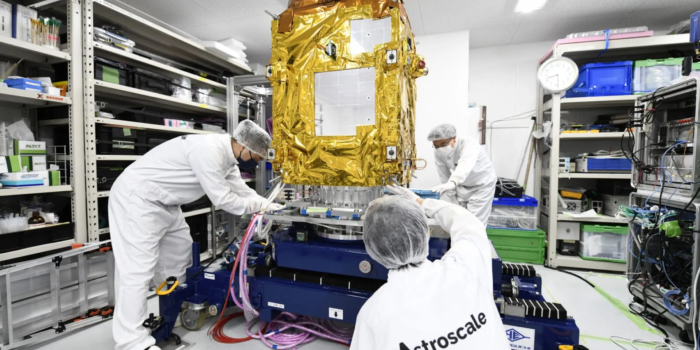The commencement of a groundbreaking space operation to retrieve a defunct rocket from Earth’s orbit marks a pivotal moment in the ongoing battle against space debris. Initiated as a collaborative effort with various companies and backed by the Japan Aerospace Exploration Agency (JAXA), this mission signifies a significant step towards addressing the escalating issue of space junk.
The mission, spearheaded by the ADRAS-J satellite, aims to meticulously inspect a deceased Japanese H-2A rocket stage currently adrift in low Earth orbit. Launched aboard an Electron rocket from Rocket Lab’s New Zealand launch site on February 18, the ADRAS-J satellite, standing for Active Debris Removal by Astroscale-Japan, embarks on the world’s maiden technical demonstration for eliminating large-scale space debris.
As the ADRAS-J satellite commenced its rendezvous operation with the defunct rocket component on February 22, it entered a critical phase where precision maneuvering is paramount. “In this phase, the operations team based in Japan and the UK will use ADRAS-J’s propulsion system to start maneuvering towards the client orbit,” Astroscale explained.

The dead rocket, approximately the size of a bus and weighing three tons, poses a looming threat to satellites and spacecraft orbiting the Earth. Orbiting at a height of 600 kilometers, if left unchecked, this space debris could persist for decades, endangering vital assets in space until eventual atmospheric drag draws it back into Earth’s atmosphere, where it will disintegrate upon re-entry.
The ADRAS-J satellite’s primary objectives include closely inspecting the dead rocket, identifying potential grapple points, and assessing associated risks. Equipped with advanced cameras and sensors, the spacecraft will meticulously approach the rocket, scrutinizing it from as close as a meter away to gather crucial data for future retrieval missions.
Despite the innovative nature of this endeavor, retrieving a dead rocket from orbit presents numerous challenges. The lack of visual aids, docking capabilities, and GPS data from such objects categorizes them as “unprepared” for safe docking. Overcoming these obstacles necessitates precise determination of the dead rocket’s location, altitude, and structural condition through intricate maneuvering and inspection techniques.
Throughout the annals of space exploration, over a thousand dead rockets have been abandoned in space, contributing to the proliferation of space debris. The success of this mission holds the promise of establishing a viable framework for removing other large, hazardous, and uncontrolled space debris, paving the way for safer space exploration endeavors.
The pioneering efforts of the ADRAS-J satellite mark a significant milestone in the ongoing battle against space debris, offering hope for a cleaner and safer extraterrestrial environment for future space missions and exploration endeavors.


